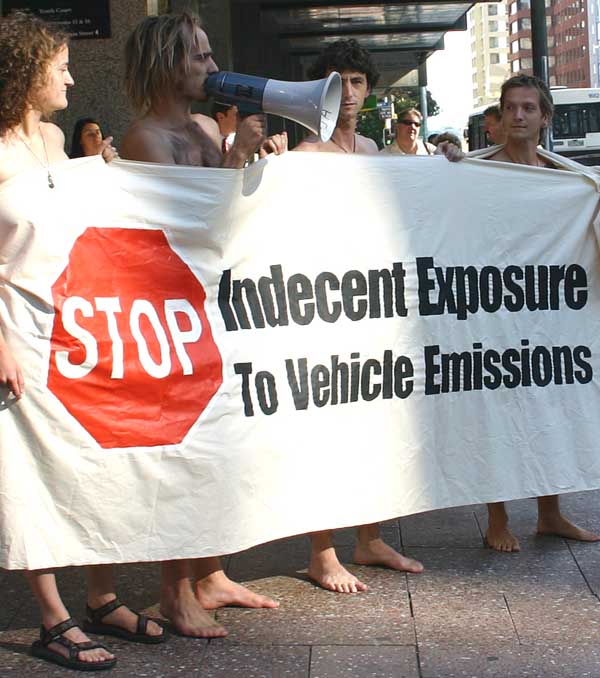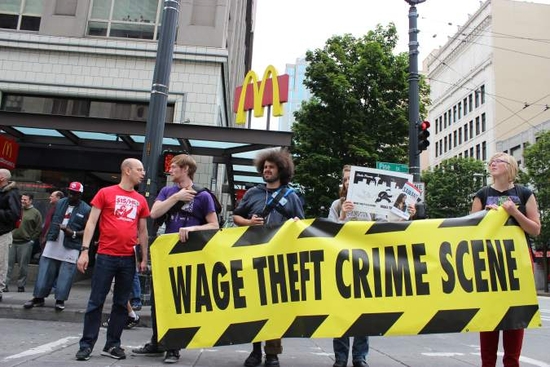 For months the news has been filled with reports of suspicious meetings between Trump associates and Russian officials. Another category of meetings also deserves closer scrutiny: the encounters between Trump himself and top executives of scores of major corporations since Election Day. What do these companies want from the new administration?
For months the news has been filled with reports of suspicious meetings between Trump associates and Russian officials. Another category of meetings also deserves closer scrutiny: the encounters between Trump himself and top executives of scores of major corporations since Election Day. What do these companies want from the new administration?
During the presidential campaign, Trump often hinted that he would be tough on corporate misconduct — especially the offshoring of jobs — and this won him a significant number of votes. After taking office, however, much of the economic populism has disappeared in favor of a shamelessly pro-corporate approach, especially when it comes to regulation. Big business has put aside whatever misgivings it had about Trump and now seeks favors from him.
There is always a fine line between deregulation and the encouragement of corporate crime and misconduct. We should be concerned about the latter, given the roster of executives who have made pilgrimages to the White House.
Public Citizen has just published a report looking at the track record of the roughly 120 companies whose executives have met publicly with Trump since November 8 and finds that many of them “are far from upstanding corporate citizens.”
Using data from Violation Tracker (which I and my colleagues produce at the Corporate Research Project of Good Jobs First), Public Citizen finds that more than 100 of the visitors were from companies that appear in the database as having paid a federal fine or settlement since the beginning of 2010.
In its tally of these penalties, which includes those associated with companies such as Goldman Sachs and Exxon Mobil whose executives were brought right into the administration, Public Citizen finds that the total is about $90 billion.
At the top of the list are companies from the two sectors that have been at the forefront of the corporate crime wave of recent years: banks and automakers. JPMorgan Chase, with penalties of almost $29 billion, is in first place. Also in the top dozen are Citigroup ($15 billion), Goldman Sachs ($9 billion), HSBC ($4 billion) and BNY Mellon ($741 million). Volkswagen, still embroiled in the emissions cheating scandal, has the second highest penalty total ($19 billion). Two other automakers make the dirty dozen: Toyota ($1.3 billion) and General Motors ($936 million).
The rest of the dirty dozen are companies from another notorious industry: pharmaceuticals. These include Johnson & Johnson ($2.5 billion), Merck ($957 million), Novartis ($938 million) and Amgen ($786 million).
All these companies have a lot to gain from a relaxation of federal oversight of their operations. While it remains unclear whether the Trump campaign used its meetings with Russian officials to plan election collusion, there is no doubt that the administration has been using its meetings with corporate executives to plan regulatory rollbacks that will have disastrous financial, safety and health consequences.
 Big business would have us believe that it is on the side of the angels when it comes to the Paris climate agreement. A group of large companies just published full-page ads in the New York Times and Wall Street Journal urging (unsuccessfully, it turned out) President Trump to remain in the accord.
Big business would have us believe that it is on the side of the angels when it comes to the Paris climate agreement. A group of large companies just published full-page ads in the New York Times and Wall Street Journal urging (unsuccessfully, it turned out) President Trump to remain in the accord. It remains to be seen how high the new special counsel Robert Mueller aims his probe of the Trump campaign, but there are
It remains to be seen how high the new special counsel Robert Mueller aims his probe of the Trump campaign, but there are  The Justice Department has a lot on its plate these days, but it has apparently found time to cook up a deal that would save Wal-Mart hundreds of millions of dollars. According to
The Justice Department has a lot on its plate these days, but it has apparently found time to cook up a deal that would save Wal-Mart hundreds of millions of dollars. According to  Lurking behind the assault on regulation being carried out by the Trump Administration and its Congressional allies is the assumption that corporations, freed from bureaucratic meddling, will tend to do the right thing. That assumption is belied by a mountain of evidence that companies, if allowed to pursue profit without restraint, will act in ways that harm workers, consumers and communities. In fact, they will do so even when those restraints are theoretically in effect.
Lurking behind the assault on regulation being carried out by the Trump Administration and its Congressional allies is the assumption that corporations, freed from bureaucratic meddling, will tend to do the right thing. That assumption is belied by a mountain of evidence that companies, if allowed to pursue profit without restraint, will act in ways that harm workers, consumers and communities. In fact, they will do so even when those restraints are theoretically in effect. We now know who it was Donald Trump was really addressing in his convention speech last summer when he declared “I am your voice”: the Forbes 400 and others in the upper reaches of the 1 Percent.
We now know who it was Donald Trump was really addressing in his convention speech last summer when he declared “I am your voice”: the Forbes 400 and others in the upper reaches of the 1 Percent. Several weeks ago, in one of his few legislative successes, President Trump signed a bill rescinding the Obama Administration’s executive order on Fair Pay and Safe Workplaces. The order, designed to promote better employment practices by companies doing business with the federal government, instructed procurement officials to consider the labor track record of contractors, which were required to disclose their recent violations.
Several weeks ago, in one of his few legislative successes, President Trump signed a bill rescinding the Obama Administration’s executive order on Fair Pay and Safe Workplaces. The order, designed to promote better employment practices by companies doing business with the federal government, instructed procurement officials to consider the labor track record of contractors, which were required to disclose their recent violations. Given his own string of business controversies, it perhaps should come as no surprise that Donald Trump does not seem to worry much about the accountability track record of the companies from which he has recruited key members of his administration.
Given his own string of business controversies, it perhaps should come as no surprise that Donald Trump does not seem to worry much about the accountability track record of the companies from which he has recruited key members of his administration. The ACA repeal-and-replace effort, given up for dead two weeks ago, may or may not be getting resurrected. Whether that happens seems to depend on satisfying the desire of Tea Party Republicans to grant Americans the right to purchase the crappiest health coverage possible.
The ACA repeal-and-replace effort, given up for dead two weeks ago, may or may not be getting resurrected. Whether that happens seems to depend on satisfying the desire of Tea Party Republicans to grant Americans the right to purchase the crappiest health coverage possible. The signing ceremony for Donald Trump’s executive order nullifying the climate initiatives of the Obama Administration was staged so that about two dozen miners looked on adoringly as the president claimed to be ending the so-called war on coal. Trump then repeated his promise that the regulatory rollbacks would “put our miners back to work.”
The signing ceremony for Donald Trump’s executive order nullifying the climate initiatives of the Obama Administration was staged so that about two dozen miners looked on adoringly as the president claimed to be ending the so-called war on coal. Trump then repeated his promise that the regulatory rollbacks would “put our miners back to work.”